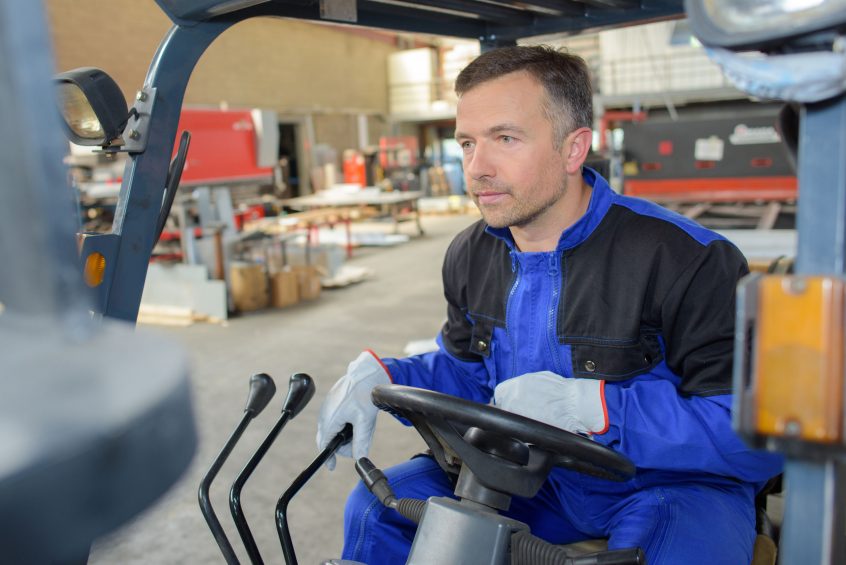Like most products, the forklift was born out of necessity. In this case, it was to move heavy materials short distances. In the early part of the 20th century, the forerunners to the modern forklift were powered hoists that were used to lift loads. World War I increased the need for development of material handling equipment due to the shortage of labor brought about by the war.
The start of World War II increased the use of forklift trucks in the war effort. Following WWII the use and innovation of the forklift has expanded around the globe. There was an increased need for more efficient ways to store products. Changes in the design of forklifts were created as the need developed for more maneuverable forklift trucks that could reach greater heights.
Today, forklifts are an vital piece of equipment in the supply chain logistics of many different industries. Below are three industries in which the forklift has become nearly indispensable.
Industry #1: Construction
The construction industry is heavily regulated with safety standards– and rightly so. Before the use of forklifts, construction sites would use ropes, pulleys and cables to move heavy materials such as crates and boxes. This increased the likelihood for injury and even death as the cables and ropes could snap at anytime.
Forklifts have been a great benefit to workers in helping them move heavy materials to different locations easily. They help increase productivity and help to ease the stress put on the workers’ bodies that can be caused by heavy lifting. It is because of these reasons that forklifts are used in the construction industry. They allow the movement of materials to be done efficiently and safely.
Industry #2: Shipping
If you’ve ever had the opportunity to drive by a shipping yard, chances are you were in absolute awe at the amount of containers. Each and every container is on its way to its own destination.

Forklifts are a vital part of the logistics of getting the containers to and from ships as well as onto railway cars and semis. In shipping yards and depots, forklifts are the most common way to move containers around. The forklift picks up the container by the 2 corner castings on the top of the container that the forklift can reach when picking it up from the side. These forklifts can also extend the arms out to pick up a 40′ container as well.
Industry #3: Warehousing and Distribution Centers
A key to being a top warehousing company or distribution center is to be able to move goods with speed and with efficiency. Warehouses are common for being the point in the supply chain where slowdown and backlogging occur. Inefficiencies have a direct impact on not only the producer of the product but also the other industries involved in the supply chain. Forklifts are essential elements in the warehousing process – from taking new products off the truck for storage to moving them to different storage areas to placing them on trucks for delivery.

The forklift plays a vital role in the profitability and efficiency of many different industries. Forklifts have made dramatic advances in innovation since the days of their origins and they will continue to do so. The role of the operator may change from being a driver of one forklift to being in charge of manning an entire fleet of robotic forklifts, but the need to have products moved will be around for a very long time.

